Restore An Old Beetle
Article by Mark Trotta
The original VW Beetle concept was one of practicality. Starting with a platform frame using a central structural tunnel, a rear-mounted engine bolted directly to the trans-axle, eliminating the need for a driveshaft or U-joints. Having an air-cooled engine eliminated the need for a water pump, radiator, thermostat, or coolant hoses.
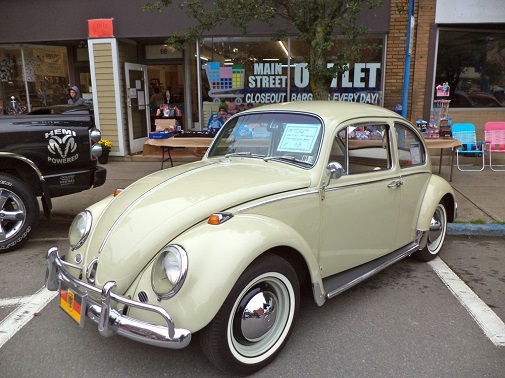
Aside from being simple, there are plenty of other reasons to restore an old Beetle--they're affordable, easy to work on, and you can build them dozens of different ways.
Best Year Beetle To Restore
During the air-cooled Bug's 65-year production run, more than 21 million were built world-wide. Every model year has it's good points and bad points.
____________________________________________
____________________________________________
The rarest and most desirable are pre-1953 models that have 'split' rear windows.
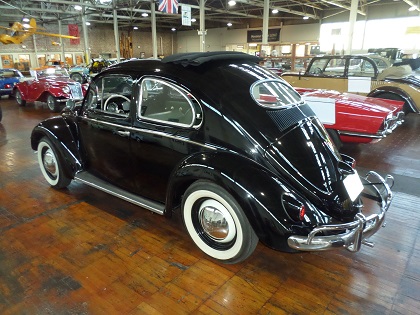
Midway through 1953, Volkswagen changed from split window to a small oval window. Unfortunately, there are plenty of forgeries out there, so check VIN and body numbers for authenticity.
Small vs Big Rear Window
Mid '53 through 1957 models had a small rear window. In 1958, a larger rear window was fitted. This is the more common window, but be aware that back in the day, there were plenty of owners that cut out the small window to fit a later big window.
Retrofitting an early Beetle back to the small window is no easy task. It will require a skilled welder and plenty of metal work.
The small window and split-window models are much less common than the later, large rear window models that followed. Although desirable, they're not a first choice for frequently driven car, and parts for these early models can be hard to find.
King-Pins vs Ball Joints
In 1966, Volkswagen started switching from the original king-pin front suspension to a more modern ball-joint front end, which gave the car better handling and a nicer ride.
As you may guess, there's plenty of purists out there who insist that only the early king-pin equipped models are "true" Beetles.
Even with off-road use (dune buggies), king-pin front ends are very strong and rarely break, but they do require special tools and skills to repair/replace.
____________________________________________
____________________________________________
Several upgrades were seen on 1967 models. Engine displacement was enlarged to 1493cc for the U.S. market, and a new dual brake cylinder system was adopted. Other improvements included back-up lights, door lock buttons, and a 12-volt electrical system. Converting from 6-volts to 12-volts is a relatively easy upgrade.
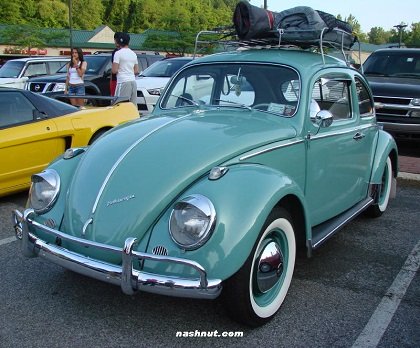
Read: VW Beetle History
Up until 1967, all VW Beetles were manual shift. Beginning in 1967 in Europe, and 1968 in the United States, an optional semi-automatic transmission was offered. It was marketed as an Automatic Stick Shift, commonly called the "AutoStick".
1967 was the last year with a metal dashboard, all later models have a plastic dashboard.
Although 1968 was the pinnacle year in terms of sales, many enthusiasts site 1969 as their favorite year Beetle.
1971 and up models were fitted with factory front disc brakes. Earlier models are often retro-fitted with an aftermarket front disc brake kit.
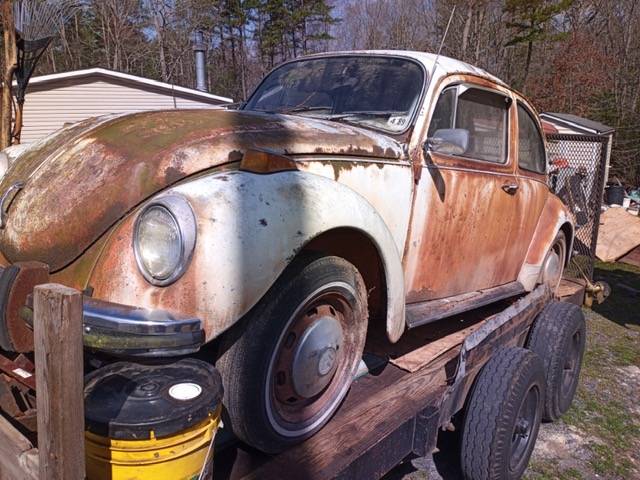
Convertible Models
Volkswagen Beetle convertibles were produced from 1953 to 1979. All year ragtops are highly desirable. The original factory-fitted tops featured a glass rear window.
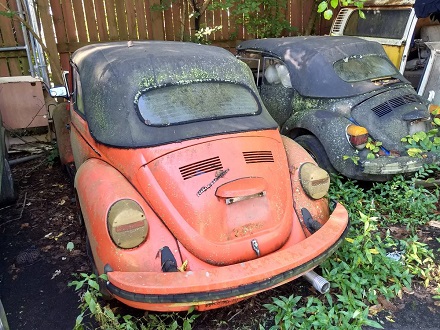
Beetle vs Super Beetle
Produced from 1971 to 1979, the Super Beetle had rounder fenders, a larger hood, and a redesigned front valance. Changes were made to the body and inner fenders to accommodate the mounting of MacPherson front struts. This increased ride quality and also improved turning radius at the same time.
More power was provided by a 1600cc engine with dual-port cylinder heads. There was also a new padded instrument panel.
Early Super Beetles had the same windshields as the standard Beetles did. Around 1972/1973, Super Beetles were fitted with a bigger, curved windshield.
____________________________________________
____________________________________________
Since the Super Beetle is two inches longer than the standard model, there is more trunk room. It also allows the spare tire to lay flat instead of being upright.
Is a Super Beetle always more desirable? Not necessarily.
The extra length and weight make Super Beetles better cruisers on the highway, but are not the best choice for a dune buggy or a custom. Plus, some parts are more expensive and harder to find.
********************
Restoring An Old Beetle
Most automotive restorers love old Bugs--they're simple to work on and every part is available.
Engines and related components are interchangeable between all air-cooled VW models. Even if an engine block is cracked or damaged, replacement cases are readily available in both cast (original) and aluminum (performance).
Common Rust Spots
Depending on where it spent most of it's life, rust is often found on all-year Beetles.
Replacement body parts are available if needed, although availability isn't the same for all years. With the exception of doors, fenders, and trunk lids, proper welding techniques are required to repair body panels correctly.
Floor Pans - This is a common repair area for many old Beetles. Also check under the battery, which is under the rear seat.
Frame Head - This is the front of the frame that sits below the gas tank. Any rust or rot here is dangerous, as this is where the front suspension is bolted onto.
Heater Channels - This is another common area for rust to form. Look above the jack support and all the way to the front.
Rear Cross Member - Under the back seat is the rear cross member. This is where the body gets bolted to the chassis. The heater tubes come through here, and they run from the engine compartment to the heater channels. Rust damage here is not always easy to detect.
Firewall - This is the panel that separates the passenger compartment from the front trunk. Rust damage here can be viewed from under the car, and also after the gas tank is removed.
Spare Tire Well - If there is a spare tire in the spare tire well, remove it and check for rust underneath.
Fenders - All four fenders on vintage Beetles are removed/installed to the body with bolts and a rubber strip. This makes them easy to remove and replace, but it's also another place where dirt can collect and eventually lead to rust.
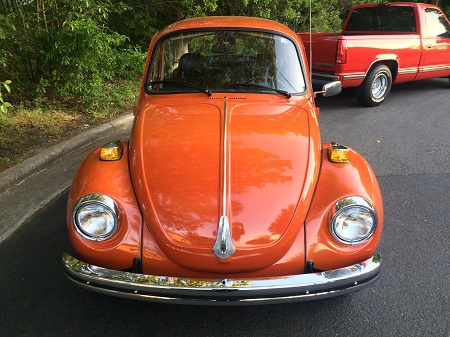
Although Super Beetles have MacPherson struts up front, their frame head is still susceptible to rust. If you're looking to restore a Super Beetle, carefully check the front strut towers.
Removing The Body From Frame
There are about 20 bolts holding the Beetle body to the chassis. Socket sizes are 17mm and 13mm.
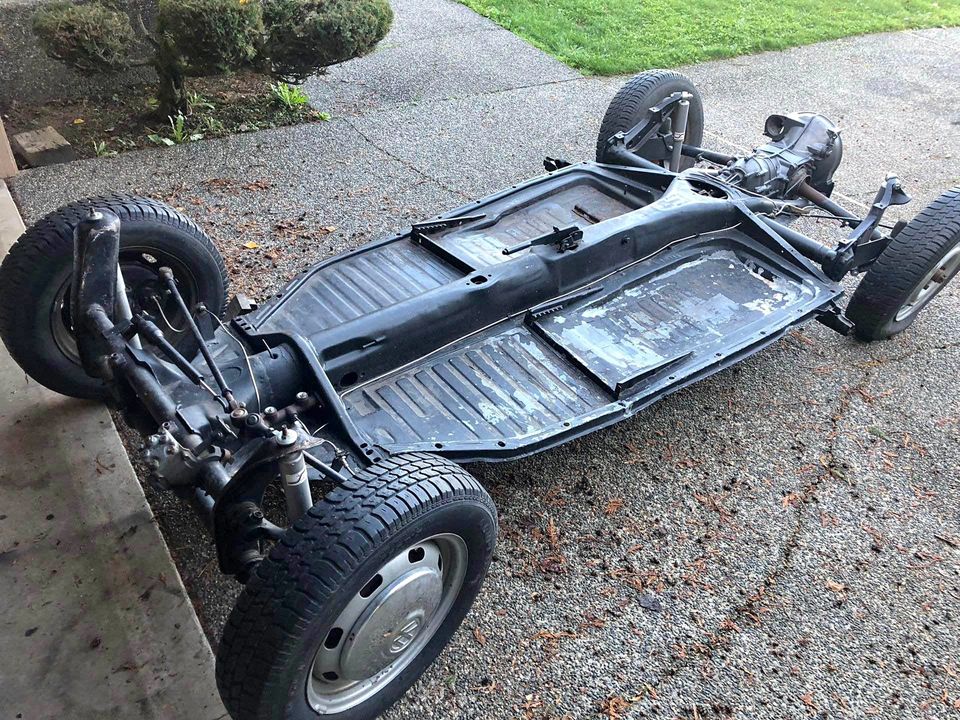
TIP: If you find a bolt (or two) missing: Take a bolt you've already removed, and see if it screws into the empty hole. Replacement bolts are readily available.
CAUTION: Crawling under a car is dangerous! Make sure your vehicle is secure on jack stands while you inspect it/work on it.
********************
Rebuild or Replace Engine?
Hopefully, you have a running, driving car that has a good engine. If not, some testing is in order.
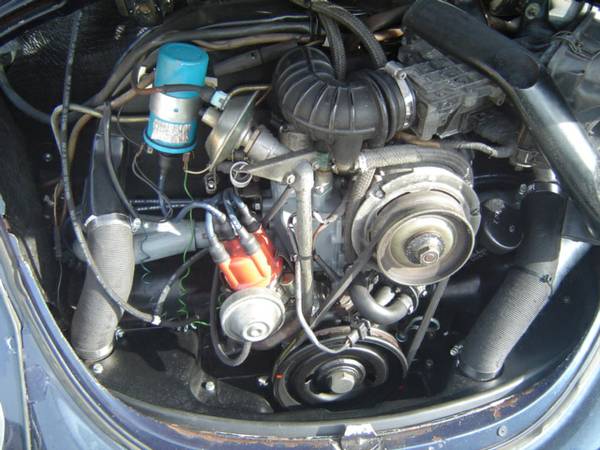
Read: Does My Engine Need A Rebuild?
If you decide to rebuild, engines and related components are basically interchangeable between all year air-cooled Beetles. Engine year and displacement can be found on the engine ID number, located directly under the alternator/generator stand and stamped into the case.
____________________________________________
____________________________________________
Remove and Install Beetle Engine
The air-cooled Bug engine is very compact and light. It weighs about 250 pounds, so removal and installation is much easier than on most other cars.
Engine removal on many old cars is done by pulling it out of the engine bay with an overhead hoist. To remove an air-cooled Beetle engine, the back of the car is lifted up and the engine drops down.
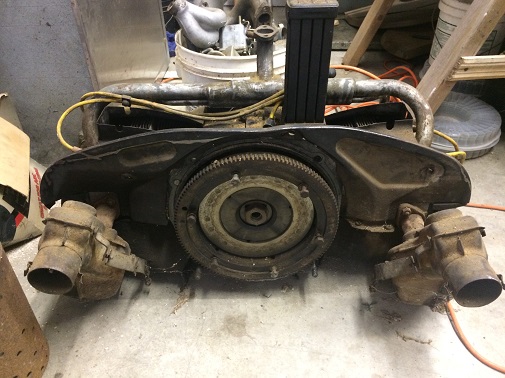
There's four main mounting bolts to connect the engine to the transaxle, and a splined shaft from the transaxle that slides into the engine. The lower two engine mounting nuts and bolts are easy to access.
The two upper engine mounting nuts and bolts are a little tricky. Having an engine cradle makes removal and installation easier. You can make one out of wood, or fabricate one from an old dolly.
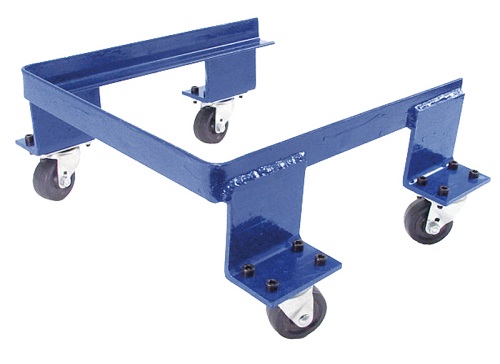
VW Beetle engine installation is about as simple as it gets. Without an engine in it, the rear end of a Beetle isn't heavy at all, and can be easily raised to slide the motor underneath.
********************
Brake System Overhaul
Air-cooled Beetles had four-wheel drum brakes until 1971. Main areas of concern here are a soft or spongy brake pedal, and leaking wheel cylinders. Also check the brake fluid for high moisture content (there's test strips for this), swollen brake hoses, and rusted brake lines. Brake overhauling requires several speciality tools and a few evenings in the garage.
Read: Drum Brake Restoration
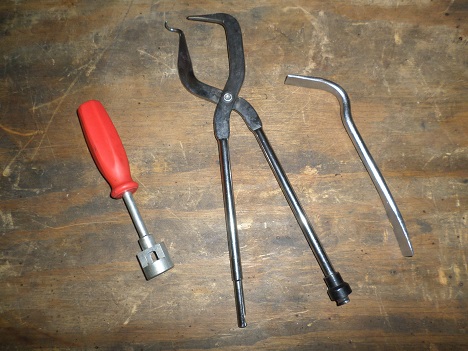
Read: Drum Brake Tools
********************
Replacement Parts
With the air-cooled Beetle being one of the highest production cars in automotive history, original parts are still plentiful and aftermarket parts are abundant. However, there's a lot of low quality replacement parts and sometimes it's hard to tell what you're getting. For example, replacement floor pans vary quite a bit, both in accuracy of the stamping and in the gauge of steel used.
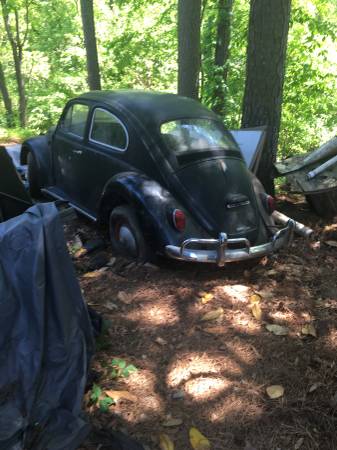
Front and rear bumpers are frequently needed when restoring an old Bug. Unfortunately, many aftermarket bumpers you see advertised are made in the Pacific Rim, and the quality of chrome is sub-standard.
********************
Conclusion
If you're interested in restoring an old Beetle, the easiest route is to find one with a decent shell and pan, with no rot in the heater channels. It's very likely that the ones you see for sale have already been partially or totally restored. But if you find one that is less than pristine, make an honest evaluation of both the car and your skills.
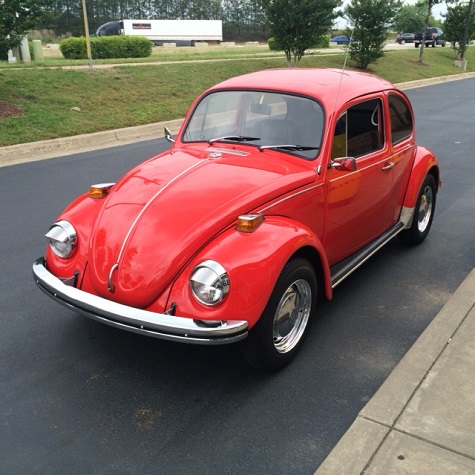
Perhaps it's because we live in a such a complex time and place, that we just naturally gravitate toward simple things. And in the world of classic cars, that's the air-cooled Volkswagen Beetle!
********************
Related Articles:
DIY Body Repair and Paint
Restore A Car On A Budget
VW Beetle History
Best Welder For Automotive Projects
********************